Government plans to give gardaí powers to use facial recognition technology (FRT) in limited circumstances hit a stumbling block last month on Simon Harris's last day with the justice brief when he was reportedly accused of "taking shortcuts" by Green Party TD Patrick Costello.
Mr Harris has been vocal in his support for the introduction of FRT saying: "We have to give the gardaí the tools that they need to tackle serious crime", but he has struggled to garner support from his Green Party coalition partners.
He has also said that the approach taken in Ireland to FRT is "cautious" in comparison to other jurisdictions.
If Ireland's approach is deemed cautious by the Government, how have some other EU and international jurisdictions approached the technology?
The model of FRT that gardaí hope to deploy in Ireland has been in use in the Netherlands since 2015.
Under the Dutch model, when detectives want to identify a suspect in a photo or video, they can run the photo through large databases of faces using a form of biometric software.
Biometric software utilises physical characteristics such as facial, fingerprint or voice recognition to verify a user's identity.
If the person in that photo is present in the database, the computer will nominate the image as a possible match, for police officers to then make a determination.
"We have two and a half million images on our database of arrested persons," John Riemen, Lead Biometric Specialist with the Dutch police, told Prime Time in a report that airs tonight at 9.35pm on RTÉ One.
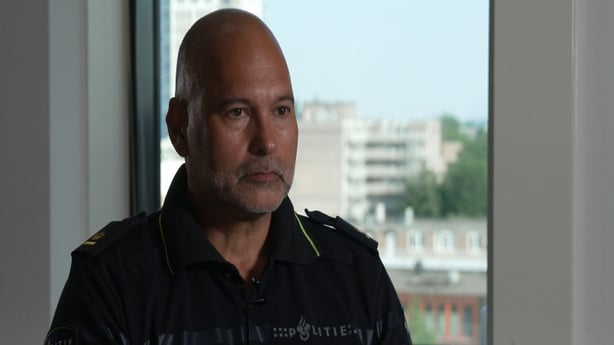
"It helps you search in a large database of images or facial images in this instance. It's just a search tool and there's no decision making by the algorithm or by the software. There's a trained expert that makes the decisions on a possible match.
"If we find somebody on the database, which the experts think could be the person, it goes to two other experts that perform an analysis comparison evaluation investigation with a checklist on all the facial features that there are, and they make up the conclusion. So, there's no system conclusion at all."
The database of images is made up of convicted criminals and suspects who have been arrested.
The recognition software - dubbed 'CATCH' by the Dutch National Police - can be used to recognise people on security camera images.
Facial recognition technology.
— RTÉ Prime Time (@RTE_PrimeTime) June 15, 2023
Just how powerful are the tools used by law enforcement across the globe to identify suspects of serious crimes?
Watch the full report from @barrycummins12 on Prime Time at 9.35pm on @RTEOne. #rtept | @rtenews
WATCH: pic.twitter.com/PBf9TDOa42
Suspects who turn out to be innocent have their image removed from the database.
"There's an oversight institute, part of the Ministry of Justice that tells us when we have to remove data from that database," Mr Riemen said.
His team works on between 1,000-1,500 cases per year. About 50% of those cases end up being suitable for the technology with around 10-15% generating successful matches.
The cases tend to be cases where there are no other leads, from ATM fraud to stalking and terrorism to burglary.
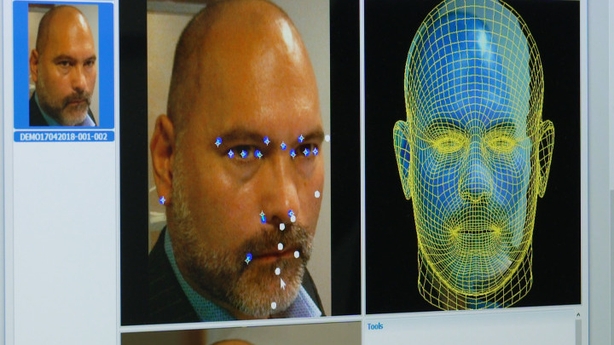
In Ireland, the Department of Social Protection has been using biometric software to confirm identities since 2011.
Over 100 cases of identity fraud have been detected by the department, amounting to a total of over €6m.
Another 200 cases of suspected fraud flagged by facial recognition software are currently under investigation.
Similar technology is used when you present your biometric passport at the airport. The camera is searching your face for individual characteristics.
But with Government unable to agree on an amendment to the Garda Síochána (recording devices) Bill to fast track the use of FRT, we are no closer to seeing it introduced for policing in Ireland.
In the US, FRT has been used, with a number of law enforcement agencies carrying out over a million searches using technology developed by New York-based firm Clearview AI.
Clearview AI was founded by tech entrepreneur Hoan Ton-That.
"Our algorithm is rated number two in the world, only second to a Chinese company. And I can pick a photo to 99.85% accuracy according to NIST out of a gallery of 12 million images," he told Prime Time.
NIST is the National Institute of Standards and Technology, an agency of the United States Department of Commerce.
"At this moment here, we have over 30 billion images in the database. What it does is it continuously collects images from the public internet from public social media, news websites, mugshot websites.
"We spend a lot of time first perfecting the algorithm, making sure it can work out millions of faces."
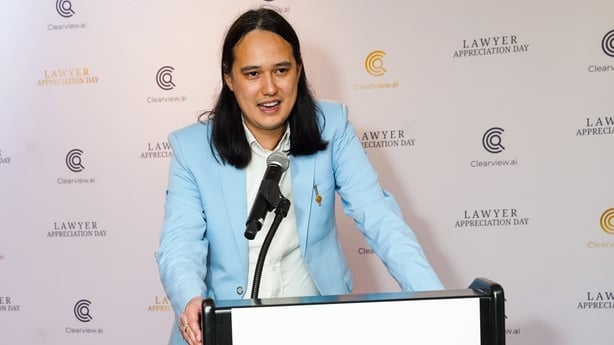
I put this algorithm to the test and sent Ton-That a photo taken in my back garden in Dublin last month.
Ton-That then uploaded the photo and pressed the search button on the Clearview AI platform.
Within seconds, I was presented with a series of photographs of me, some of which I’ve seen before, but there are others that I had never seen before, including one taken at an adventure centre 18 years ago.
I’d never seen them until I started working on this report. But they are me. I don’t know who took the photos and put them online, but they were matched to me by facial recognition.
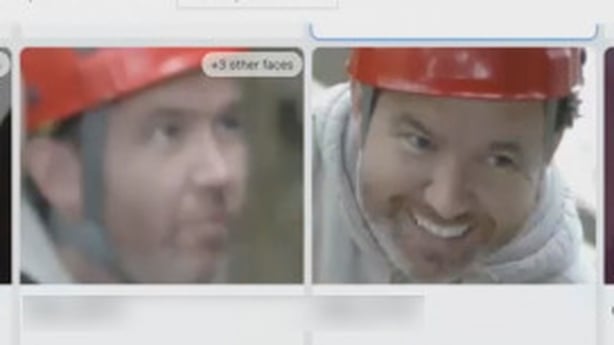
For some, this may be seen as an intrusion on digital privacy, but Ton-That says there are material benefits to the use of his technology.
One US law enforcement agency to have used Clearview AI is the Department of Homeland Security.
The technology led to a paedophile being tracked down and sentenced to 35 years in jail.
The suspect’s image was captured from child abuse imagery and matched with someone in the background of a selfie taken in Las Vegas.
"It's the best and highest purpose about technology. These are really heinous crimes. These are really big things that I think almost everyone can agree on that. Catching a child molester or stopping drug trafficking," said Ton-That.
But not all facial recognition searches by law enforcement have been as successful, with some false positives leading to suspects being wrongly identified.
"I'm a big believer in humans making the final decision on anything. Technology can only help people make decisions," Ton-That said.
"There's been over a million searches done by law enforcement in the US on our platform and there have been very few wrongful arrests overall due to the use of facial recognition.
"And if you look at each one of those, they've come down to poor police work where they are not checking the results that come back and they're making assumptions that they shouldn't make."

Back in Ireland, concerns have been raised about the pace of development of technologies, such as Clearview AI and the potential repercussions for individual rights.
"I'm worried about the pace of adoption of these technologies," said Dr Andrew Hines of the School of Computer Science at University College Dublin (UCD).
"If you're a doctor you're regulated. If you’re an engineer, you're regulated. If you're a pharmacist, you're regulated. And I see it that regulating retrospectively for these things isn't working for us. And I think there should be regulation for computer scientists and software engineers where there's a high risk to individuals' rights."
The AI Act includes restrictions on how companies use artificial intelligence, including the use of remote biometric identification in public venues.
In some parts of the UK, police use live facial recognition. The AI Act will prevent EU member states from adopting that approach.
"It is not going to be possible for a police force in Europe to use facial recognition in a live real-time form. A judge or someone of equivalent standing is going to have to approve each use of facial recognition technology," Barry O’Sullivan, professor of Computer Science in University College Cork, said.
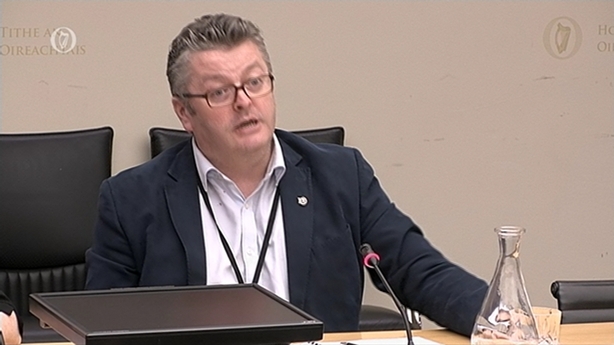
"Why are we so concerned about facial recognition technology? Because it's powerful. The second thing is that if you think that you're being watched you really change your behaviours.
"That is something that really impacts your fundamental rights, it impacts your individuality, your autonomy, your agency, your privacy. And these are things that we must protect at all costs."
The inclusion of biometric identification in the AI Act has proved contentious, with Fine Gael MEP Deirdre Clune, a lead negotiator on the Act and party colleague of Simon Harris, saying: "I think it should be there in very limited circumstances, child abduction issues, terrorist [or] serious criminal offences."
Minister for Justice Helen McEntee told RTÉ on Wednesday that plans to introduce FRT in Ireland have not been shelved on foot of the AI Act being passed.
Watch reporter Barry Cummins and producer/director Aaron Heffernan’s Prime Time report on facial recognition technology at 9.35 on RTÉ One.






